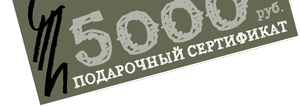Just when you want to say “Now, I’ve seen it all,” another show at the Ringling International Arts Festival comes along to suggest you never will see it all. There is no shortage of inspired creativity.
I spent Friday seeing everything from a troupe of European dancers who seem to make it up as they go along, to a performance artist who uses his hands to tell the story of the Apollo 11 mission that landed the first men on the moon and topped it off with a Romanian singer who performers jazzy riffs on traditional gypsy songs and stories.
And for some heft in between, there is a marvelous, young Russian acting troupe performing “The Boys,” telling part of the story of Dostoevsky’s “The Brothers Karamazov.”
By the end of a day of any combination of shows you may see at the festival, you can’t help but wonder what led to some of the creations you’ve seen.
Andrew Dawson, who was performed as a mime, was asked to create a show that would require only a table for the set. He knew he would be using his hands to tell a story and figured it better be a big story. So he came up with “Space Panorama,” in which he uses his hands to suggest the Apollo 11 rocket, the astronauts riding in a van to the ship, a sense of floating through space, the smoke and flames coming out of the rocket on its takeoff and the shape of the lunar landing module making its final descent. It’s a brief but imaginatively told story.
Sanda Weigl is described as a gypsy diva, and she performs Romanian gypsy music with a twist, accompanied by the Takeishis, an impressive trio of Japanese jazz musicians that take her traditional music in fanciful directions. There is not a lot of personality on display in her performance, but she sings with incredible intensity, beauty, power and emotion. Her songs are often dark. One is about a woman leaving her drunken and abusive husband, while another focuses on a drunk man contemplating his death. But she gives even the darkest of songs a life-affirming spirit.
An uplifting spirit is also the eventual message of “The Boys,” which tells just one part of Dostoevsky’s massive novel. The focus here is on the transformation of a group of school boys from tormenters of a young classmate into good friends who do what they can to provide happy memories in his final hours. With the help of Alexey Karamazov (the youngest brother), the students find a sense of peace and purpose in their lives. The production by the Theatre Art Studio is directed with a wonderful raw energy by Sergey Zhenovach and performed by a cast that doesn’t look much older than the young boys they are playing. Zhenovach creates some beautiful visual images as the actors tell a story that veers into serious discussions of politics and philosophy.
Though it runs more than two hours with no intermission and is performed in Russian (with English supertitles), “The Boys” may sound like the most daunting production in the festival. But it moves quickly, captures the flavor of Dostoevsky’s writing and reveals how many different ways there are to tell stories on stage.
The festival is offering four dance productions this year, and the Les SlovaKs Dance Collective takes dance in different directions with its show “Opening Night.” On one hand (or foot) the five dancers (accompanied by a violinist) perform variations on traditional Slovakian dances. On the other, they are free spirits, seeming to improvise (or performing rehearsed improvisations) as they cavort with one another, rolling around the stage, leaping, climbing atop one another or generally having what looks like a grand time. Don’t go looking for a story in their performance, but try to lose yourself in the continuous frenzy that they create on stage.
The festival is full of such surprises.


